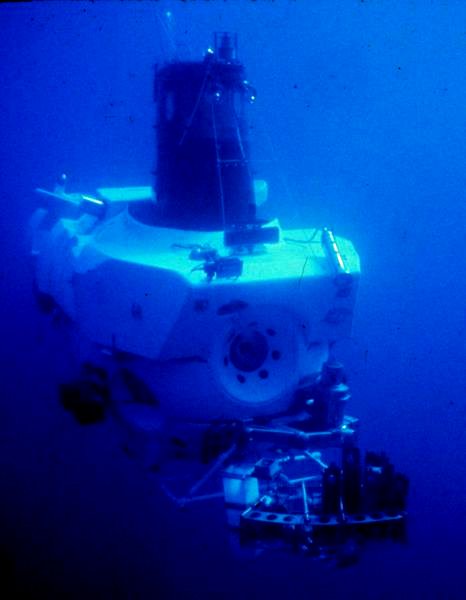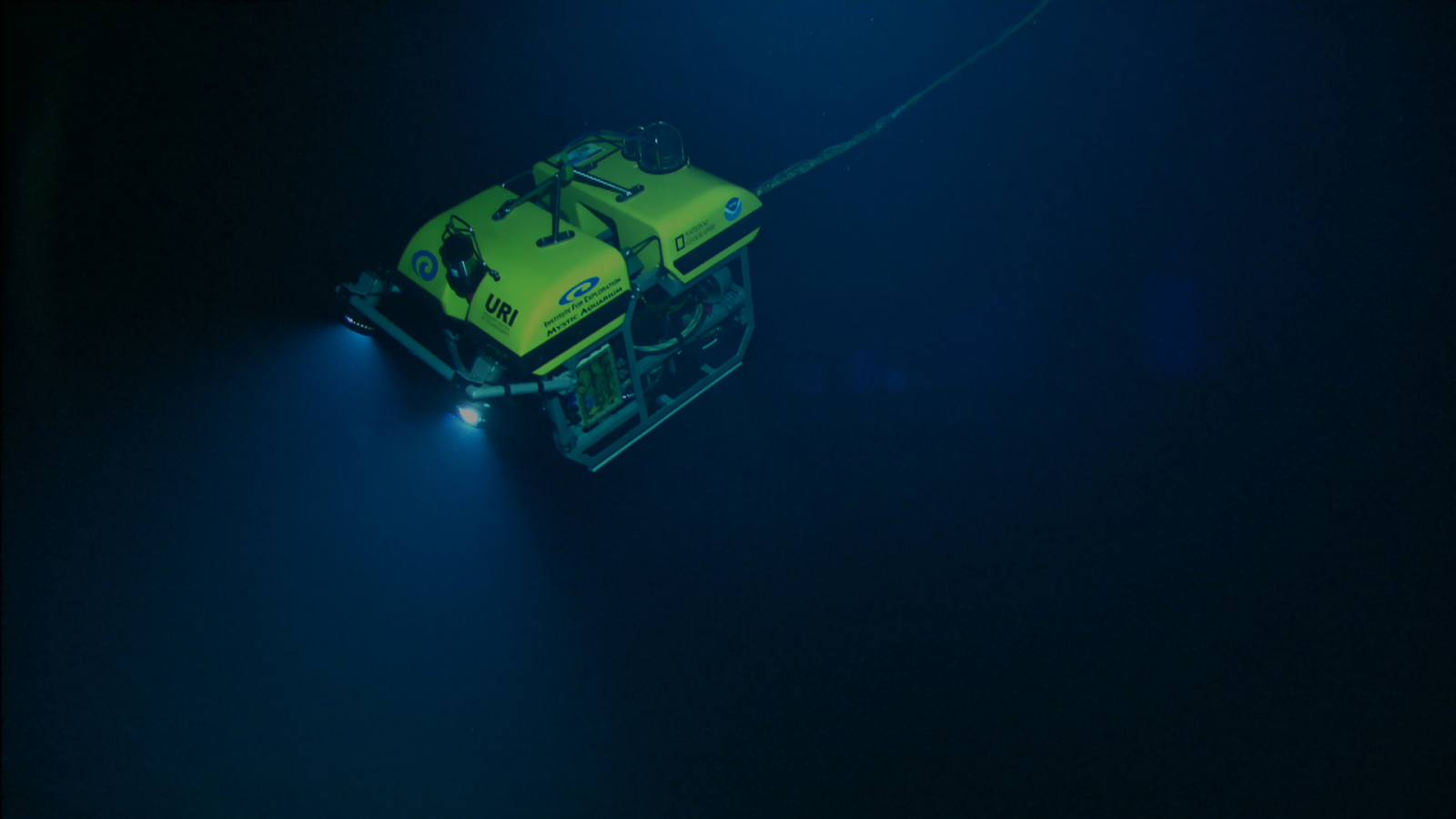Exploring the oceans
Interview with
Sarah - Humans have not only taken from the oceans. We have been exploring them, and charting them for thousands of years. One of the final realms to be explored was the deep sea. The practicalities of air supply and the huge pressures deep sea vessels had to withstand, meant that the first major expeditions to the depths of the ocean only came about in the mid 20th century.
The deep sea submersible Alvin was one of the first vehicles used for such an expedition.
 Kurt - Alvin was commissioned in June of 1964 and made its first dives soon after that.
Kurt - Alvin was commissioned in June of 1964 and made its first dives soon after that.
Sarah - Kurt Uetz from the Woods Hole Oceanographic Institution, where Alvin was developed...
Kurt - It was originally a vehicle that would go down 2400 metres and take 3 people, one pilot and 2 scientists or observers. SO its been operating for over 46 years and 4664 dives.
It still takes 2 people down, one pilot and 2 observers or scientists and we've extended its reach from 2400m to 5400m and the project now is for extending its reach down to 6500m deep. That's 98% of the ocean floor we'll be able to explore.
Sarah - And what's it like to undergo one of the dives? Cramped is probably the word. Whilst Alvin is around 7 metres, that over 20 feet long, the sphere that carries the people is much smaller...
Kurt - There sphere is about 7 feet in diameter and it is about half full of electronics and oxygen bottles and Co2 removal equipment. And then there's one pilot seat and two very low, long chairs along the very bottom of the sphere where the two scientists sit. And if you're going on a dive, the next morning, we usually dive from 5-8, you'd get inside the vehicle through the hatch on the deck of the ship and then they close the hatch and the crane lifts you into the water in less than one minute and you're released. You're completely independent of the ship. There's no tether line. And when the pilot takes you down, generally the lights are turned off or down because they're trying to conserve energy on the batteries. And to get down to 5400m is about 2 and a quarter hours.
The benefit is having a face to face interaction with the sea bottom. The benefit for science there is your perspective of what's going on. You could drive your vehicle by looking at a computer monitor but looking out the windshield gives you a much better and safer perspective. And that's where the Alvin is, being able to look out of the windows or the view ports of the vehicle to exactly what is on the bottom and you're seeing it with your own eye, gives you a better perspective, you can respond to what you thought you wanted when you went down, and now you see the real situation. It's a little bit different to looking at it on a 2D screen.
Sarah - And after that 2 and a quarter hour descent, the team can expect to spend between 5-6 hours making observations through the tiny reinforced windows and taking samples using the manipulating arms. And it's that direct interaction with the deep sea environment that Kurt believes makes Alvin so special.
between 5-6 hours making observations through the tiny reinforced windows and taking samples using the manipulating arms. And it's that direct interaction with the deep sea environment that Kurt believes makes Alvin so special.
Kurt - The Census of Marine Life was the first cooperative global effort to assess everything that lives in the oceans from microbes to mammals, to the mud and sediment on the seafloor and the sea surface, and even the sea birds, from the tidal pools along the coast to the mid ocean.
Sarah - Alvin has been instrumental in improving our understanding of deep sea environments like the toxic yet incredibly diverse hydrothermal vent systems, as well as taking one of the first trips to view the wreck of the Titanic.










Comments
Add a comment